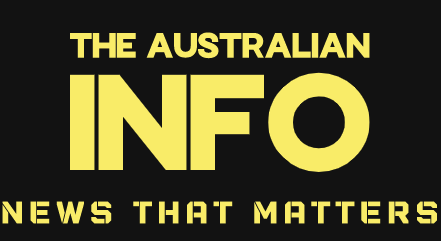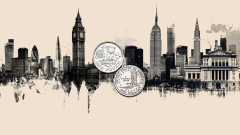Amid great economic, political, and technological change, it can feel impossible to predict what might happen next. Nick Foster, a futurist and designer who has worked at Google X, Sony, and elsewhere, says that most of us struggle because we tend to fall into one pattern of thinking about the future. A better approach — for leaders, teams, and entire organizations — is to consider the long-term view through multiple lenses, understanding the strengths and weaknesses of each. He explains how more deep and rigorous thinking and discussion on these issues can yield better outcomes for businesses of all kinds. Foster is the author of the book Could, Should, Might, Don’t: How We Think About the Future.
ALISON BEARD: I’m Alison Beard.
ADI IGNATIUS: And I’m Adi Ignatius. This is the HBR IdeaCast.
ALISON BEARD: Adi, how good are you at predicting the future?
ADI IGNATIUS: I am very bad at predicting the future. In fact, you could use my predictions as a counter-indicator of what actually is going to happen. But why are you asking?
ALISON BEARD: Well, predicting the future is something that every business leader tries to do as they’re planning their long-term strategy, but it’s obviously extremely difficult. Particularly in the current world, it seems like no matter how much data you gather or logical projections you make, you really don’t know what’s next or what’s going to happen. But our guest today has a framework for helping us do a better job.
ADI IGNATIUS: That sounds really valuable. We are living in a period of hyper-uncertainty, that’s absolutely true. Sometimes the response is just live with uncertainty, but surely there’s a better way to tease out the weak signals or think about your own goals and visions and be a little bit better at predicting what’s next.
ALISON BEARD: Yeah. That’s why I wanted to talk to Nick Foster. He is a futurist whose worked as a designer at some of the world’s biggest tech-focused companies, including Google X, Sony, and Dyson, and he’s the author of the book Could, Should, Might, Don’t: How We Think About the Future. He argues that most of us fall into one of those four patterns. One side is could futurism, which is overly optimistic, tech-centered utopia. Then on the opposite extreme is don’t, where you’re thinking about all the negative externalities. We’re seeing that play out in the debate over the future of AI right now. So here’s my conversation with Nick.
Nick, thanks so much for being with me today.
NICK FOSTER: Oh, it’s lovely to be here. Thanks for the invitation.
ALISON BEARD: You’ve worked closely with companies like Sony, Nokia, and Google to help them think about and design the products and services of the future. How in your experience do organizational leaders typically approach this work? And what do they tend to get wrong?
NICK FOSTER: My opinions are all tainted by the companies that I’ve worked for, so my experiences are quite narrowly focused on large technocratic organizations, which is where I’ve spent the majority of my career. But I think it’s a spectrum. I think I’ve been fortunate to work in companies that have typically a separate team or a group of people explicitly focused on longterm futures-oriented projects. Which is I think a part of the problem, a blessing and a curse in equal measures. You need a lot of time and money typically to build those sorts of units. You need to have a company where there’s that amount of flexibility and the desire to explore and shape the future.
Quite often, it’s cleaved off into these separate labs and separate units. That’s the first thing, it others this kind of work in I think an unhelpful way. It means that other people in the rest of the organization feel like it’s not their job.
But more importantly, I think what I’ve noticed is the people within organizations tend to fall into one of the four pockets when it comes to thinking about the future. And what I think it leads to is a lack of rigor in the general tone and quality of future thought in almost every company that I’ve worked in. I think it’s symptomatic of just the larger place we have found for conversations about the future in society, culture, and everyday life.
ALISON BEARD: So why don’t we dig into those four types of futurism that you cover in your book, and their respective strengths and weaknesses? First, how would you define could futurism?
NICK FOSTER: Could futurism is what I could call the most overtly futuristic type of futures work that we see so much. If you were to go to Google Images and type the future or futuristic, you’d see the gleaming crystal architecture, and robotics, and drones, and all of the usual whizzbang icons of progress that we’re very familiar with. Could futurism is about that wide-eyed technocratic expectation about the future being this transformational place.
ALISON BEARD: Flying cars. Houses on Mars, all of that.
NICK FOSTER: All of that sort of stuff, yeah. This way of thinking about the future as a modernist ideal brought about by technology being this great savior and driving force behind things. I think the weakness of this way of thinking, there’s quite a few actually, but one of the main weakness is it’s very heroic, just like science fiction is very heroic. It paints the future, people that live in the future, as these heroes, these extreme characters. It feels more like advertising than it does a talk about real life, and real people, and real experiences.
I think again, it pitches the future over there somewhere, as opposed to what it really is, which is an evolution of the present. It very rarely engages with conversations about if we are to be doing these things in 15 years, 20 years time, what does two years’ time look like? What does the next step look like? What does it mean when it is mass adopted into everyday culture?
ALISON BEARD: I imagine that it’s something that people leading businesses day-to-day see as too far our to strategize around?
NICK FOSTER: It depends. Again, my eyesight is blurred by the places I’ve worked. I was head of design at Google X for a long time, and the very explicit nature of that work is to think very pointedly about long-term horizons. I am a designer, but fortunately, I’ve also been around a lot of scientists, and engineers, and entrepreneurs, and strategists, and business leaders.
And the thing that’s really interesting is when we’re talking about product details, or technical details, or science and the core building blocks of the technologies we’re working on, there’s this desire for real rigor and depth of thinking about what we’re talking about. But as soon as we talk about 10 years, 15 years hence, people from all ilks just lazily grab for things from the Jetsons, or references from Minority Report, or some sort of Star Trek reference. And I think that that’s a critical failure of when we find ourselves too heavily relying on could futurism, it is a placeholder. It stops as really embracing and engaging with what we’re building, and why it matters, and what it might lead to.
ALISON BEARD: Okay. Let’s move on to the next bucket of future thinking, should. What do you mean by that?
NICK FOSTER: Well, should is this feeling of certainty about the future. This notion of an endpoint that we know is coming and we’re headed towards it. In work environments and in businesses, I think this has been replaced largely by the notion of data. And using patterns of data, and being able to algorithmically decode the world somehow to convert. To a solid line into a dotted line and make a projection. Become the dominant form of business futurism, I would say.
But I think the challenge with this type of work is firstly, it leads us to think of the future as a singular dot on a chart, a singular point, as opposed to a territory or a zone. But also, I think anyone whose spent any time around this sort of projection environment knows that these lines don’t move in the paths that we think they’re going to move in. I think we’re not open and honest enough about that level of uncertainty in this type of work. Corporate strategy is the flag carrier for this type of work I would say in business. Again, it has its benefits, and it’s made its way right to the top of lots of large organizations based on previous experience and previous data, but it is still storytelling. I don’t think we’re honest enough about that.
ALISON BEARD: So the weakness of that type of thinking is believing that what the data shows you is true because data can be manipulated. You can pick numbers to tell any kind of story.
NICK FOSTER: Yeah, absolutely. All the data we seek is inherently incomplete. It’s increasingly stochastic and volatile. The systems that we play within have become these hyper objects where the edges are really fuzzy, and random acts can affect things absolutely dramatically overnight. Some celebrity could tweet something about your brand or your company, a ship could get stuck in the Suez Canal, and suddenly, all your modeling and projections that felt so certain the day before suddenly become completely off. It is probably the best we can do right now in terms of a technique, but I don’t think we’re honest enough about that sort of blurriness of those lines and those dots. And we should sort of start to try and look a little bit more perhaps at the third type of futures work that I refer to, which I call might-
ALISON BEARD: Yeah, that’s a perfect transition. So go ahead and tell us about might futurism.
NICK FOSTER: At risk of this turning into some sort of lecture, might futures is sort of what we do every day. It’s about basically scenario planning. It sort of builds itself off this natural game playing strategy mindset. Things like chess are very much might futurism. “If I move here, they might do this; and if they do that, then I might do this.” And it became more formalized in the Cold War with people like Herman Kahn and Rand Corporation, and people like Pierre Vac who were working at Royal Dutch Shell. It coincides with the growth of big compute really, which is this idea of the space ahead of us is sort of unknowable, but we can plot likelihood and uncertainty out into that space. And if this happens, then that might happen. In my world, in sort of design, this is the type of futures work that is sold as a service, a lot of strategic foresight, the ability to run a model, run an extrapolation of, “We should do this, we should do that.” So it’s sort of multiple storytellings at any one time.
ALISON BEARD: And it seems like businesses have largely embraced this type of thinking. Envisioning multiple potential futures, what might happen if you go down a certain strategic path? What might happen if you go down a different one? And then making a decision based on all of those predictions, right?
NICK FOSTER: Yes, absolutely. And again, it’s probably one of the more prevalent forms of business futures work, and certainly it has its place. Some of the critiques of this way of thinking are based around imagination, actually. When we come to thinking about the future, it sort of extends like a cone from our chest outwards. The further out we go, the wider it becomes and the more uncertain things become. But I think we are actually proven to be not very good at imagining what might actually be out there. It’s very easy to say, “Well, that would never happen, that’s impossible,” and sort of push it out into the impossible outside of this cone of possibility. Also, time doesn’t really work how we think it does. Lots of things are exponential and they happen a lot quicker than we think they might happen.
You ask companies like Nokia where I used to work, or Blockbuster, or Kodak, whether they had all of the ideas about the future in front of them in place, they’d probably say, “Yeah, we had a pretty fair idea,” but we all know from history they were sideswiped by something that they either didn’t see coming, or they put way out in the sort of preposterous that’ll never happen territory. Our levels of imagination and a sort of breadth ideation around potential futures, it’s not as good as we think it is.
ALISON BEARD: The might thinkers need to do better at the could and then also the don’t, which brings us to the final of the four types. So, what is don’t futurism?
NICK FOSTER: Don’t futurism is something that I think we all do. And I think we’re sort of seeing it more and more in public society now. This notion of the future as a place where we want to stop certain things without wanting to stray too far into the lands of dystopia. It’s definitely about pointing out all the negative externalities of the things that might happen if we keep going on this path or we take that decision. I think it can be super powerful and it’s definitely forming a large part of the discourse in politics and in business at the moment. I think sometimes it can be quite easy to dismiss as fearmongering. It often sits outside of the positions of power that it wants to change, and sort of wags its finger from the outside and says, “No, no, no, you mustn’t.” And I think a future where this type of work is more integrated within these organizations that these people want to change would be more potent.
I think there is a version of don’t futurism, which is less sort of flip the table and burn it all down, which is this sort of feeling of responsibility in the work that we’re producing and the decisions we’re making. Sort of playing through the implications of the things that we’re bringing about. The reality is all of us today are living in this world, which is an accidental time capsule that was planted by our predecessors. And we’re mopping up the lack of thought that they put into the future. So we’re starting to feel like maybe we should be doing a bit more there and thinking a bit more responsibly.
ALISON BEARD: I would say from my perspective, it seems as if the corporate world has very much been focused on could, should, might, and not as much thinking about the knock-on effects of the products and services that they’ve put into the world. Why do you think that it’s an important time for all of us to rethink the way we are imagining, or predicting, or planning for the future?
NICK FOSTER: This is something that I’ve been interested in for a long time, because I’ve been wor





